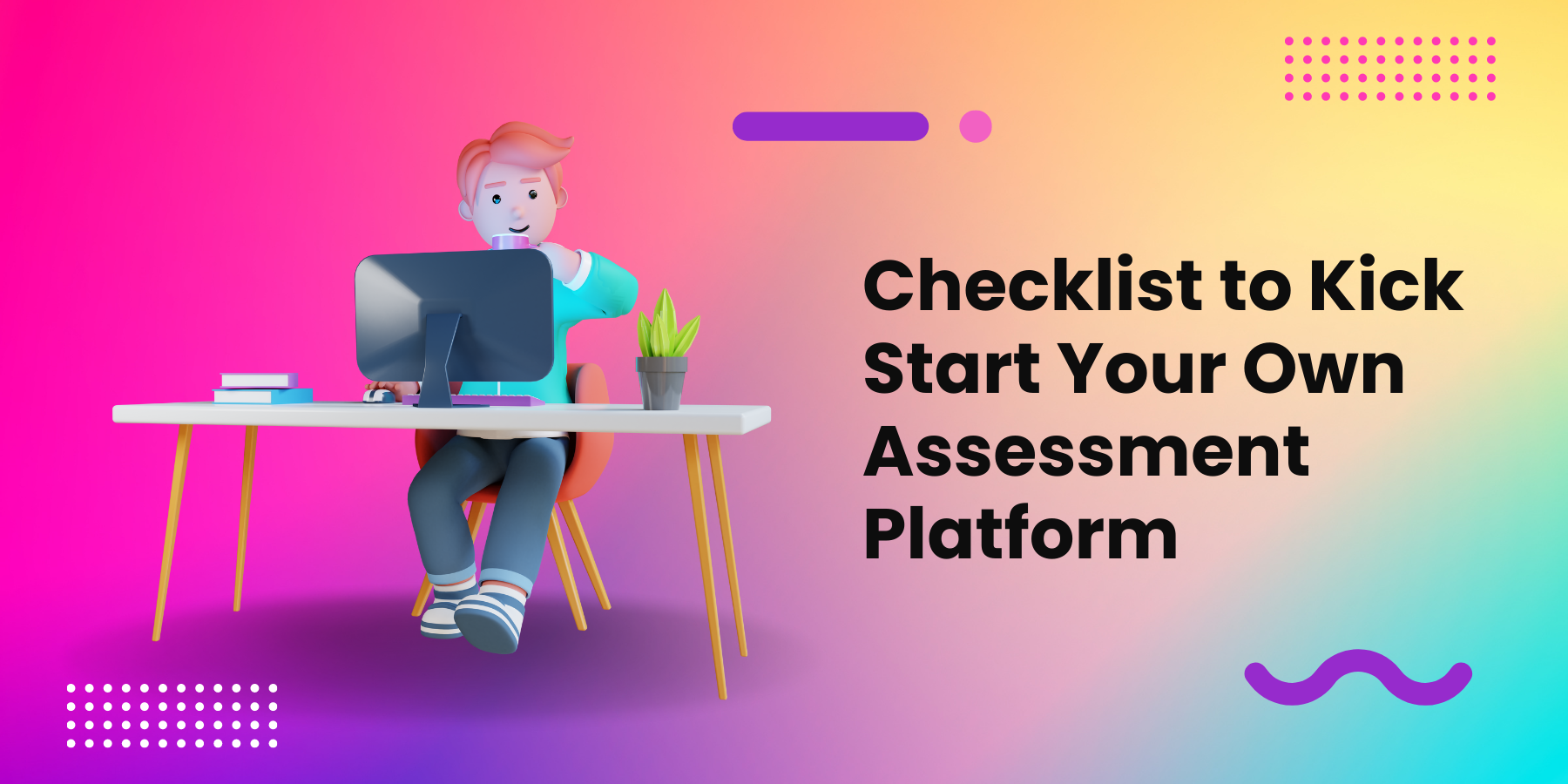
Checklist to Kick start Your Own Assessment Platform
Are you considering launching your own online assessment platform?
Fortunately, setting up one doesn’t require specialized coding skills. No-code solutions have drastically simplified the process and make it easier to launch your own assessment platform in just a few steps.
Here’s how:
White-labeled assessment platforms offer a suite of features to help organizations create, deploy, and manage their tests. They are used in virtually every industry for recruiting, on boarding, training, and other purposes. But what does it really take to build one?
In this blog post, we will discuss what steps should be taken when choosing an assessment platform and provide a checklist to help you kick start your own white-labeled assessment platform.
What Is A White Labeled Assessment Platform?
A white-labeled assessment platform is an assessment platform that is designed and developed by a third-party provider allows a company or organization to offer its own customized online assessment platform without having to build it from scratch. It provides the resources needed to build and manage assessments, as well as deliver them securely to users. With a white labeled assessment platform, the platform can be customized and branded with your company’s logo.
Benefits of White Labeled Assessment Platforms
There are many benefits to having a white labeled assessment platform. One of the main advantages of having a white-labeled assessment platform is the ability to create a seamless user experience for your employees, customers, or students. By branding the assessment platform with your own logo, colors, and branding, you create a sense of continuity between your organization and the assessment platform.
Firstly, it ensures brand consistency across different mediums. Additionally, it increases customer trust in your product or service since users will know that it is from a legitimate source. It also allows for better customer support since the platform will be customized to your brand and customers can easily identify it. Finally, it reduces long-term costs as you won’t need to pay an external company for assessment services.
Checklist to Creating Your Own White Labeled Assessment Platform
Creating your own white-labeled assessment platform can seem overwhelming, but with the right checklist it doesn’t have to be. Here are some key steps to consider when creating your own white-labeled assessment platform:
- Define your target audience: The first step in creating an assessment platform is to identify your target audience. Who will be using your platform, and what are their needs? Are you targeting students, employees, or customers? Understanding your target audience’s needs will help you design a platform that is tailored to their needs and preferences.
- Determine the types of assessments you want to offer: Different types of assessments are suited for different purposes. Some assessments are designed to test knowledge, while others measure skills or attitudes. Determine the types of assessments you want to offer and the format in which you want to present them, such as multiple-choice, true/false, or essay questions.
- Consider the level of customization you need: Customization is crucial for an assessment platform, as it allows you to tailor your assessments to your specific needs. Determine the level of customization you need, such as the ability to create and edit assessments, and whether you want to offer pre-made assessments.
- Choose a user-friendly interface: A user-friendly interface is essential to ensure that your platform is easy to use and navigate. Your interface should be intuitive and easy to understand, with clear instructions and a simple layout.
- Decide on the scoring system: The scoring system you choose will depend on the type of assessments you offer and your specific goals. Some assessments may require a pass/fail system, while others may require a more detailed scoring system. Determine the scoring system that best fits your needs.
- Ensure the security of your platform: Security is critical for any assessment platform, as you want to ensure that your assessments and user data are protected. Implement security measures such as encryption, two-factor authentication, and regular backups to prevent data breaches and keep your platform secure.
- Test your platform thoroughly: Before launching your platform, test it thoroughly to ensure that it meets your goals and objectives. Test for usability, functionality, and security, and use feedback from your target audience to refine your platform and make any necessary improvements.
- Consider integration with other tools: Integrating your assessment platform with other tools, such as learning management systems or applicant tracking systems, can enhance its functionality and make it easier to use. Consider whether integration is necessary for your specific needs and whether it is feasible within your budget.
- Plan for scalability: As your platform grows, you will need to ensure that it is scalable and can handle increased traffic and data storage. Plan for scalability from the beginning to ensure that your platform can accommodate your growth and expansion.
- Provide excellent customer support: Finally, ensure that you have excellent customer support in place to address any issues or concerns your users may have. Provide clear contact information and support channels, and respond to inquiries promptly and professionally.
Assessment platforms have become an essential tool for companies and organizations to evaluate the skills and knowledge of their employees, customers, or students. With the rise of remote work and online learning, the need for reliable assessment platforms has only increased. If you’re considering creating your own assessment platform, it’s essential to have a checklist to ensure that your platform meets your specific needs and goals.







